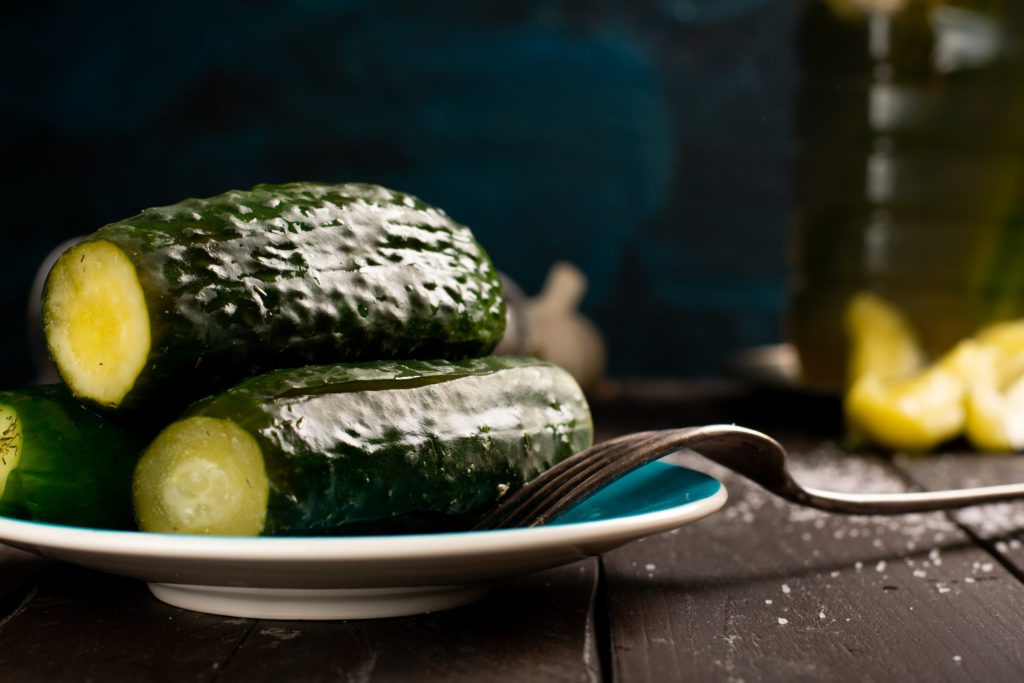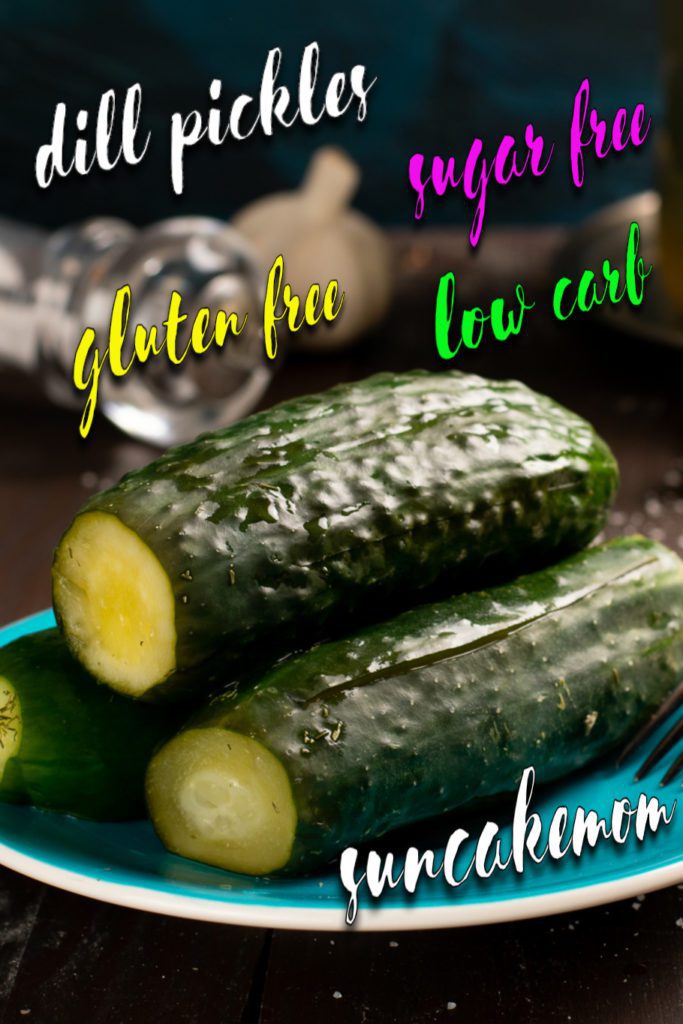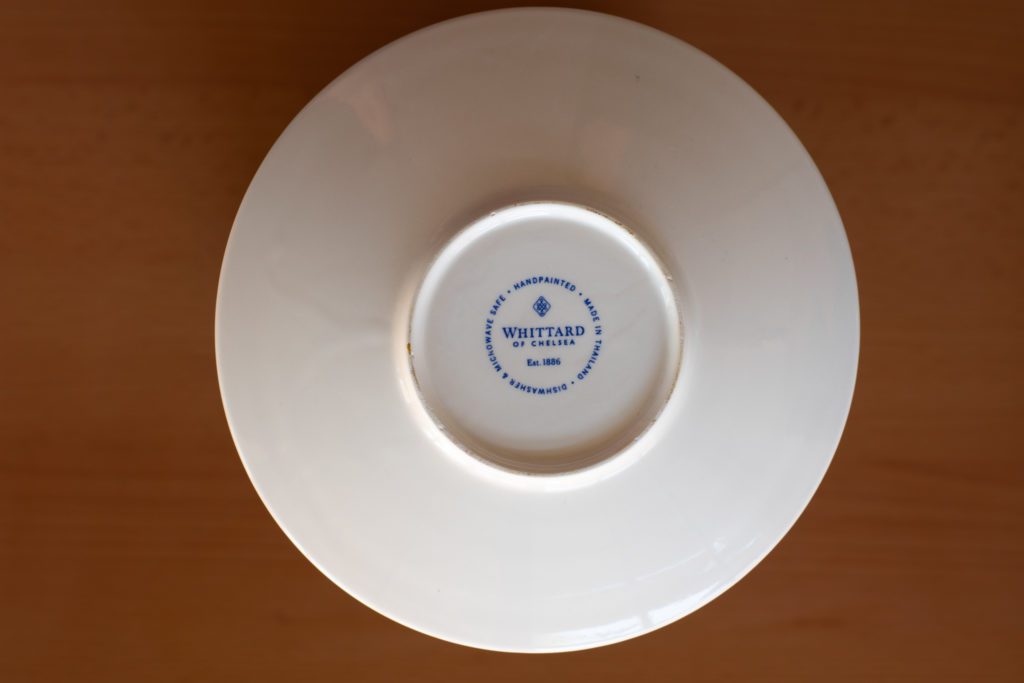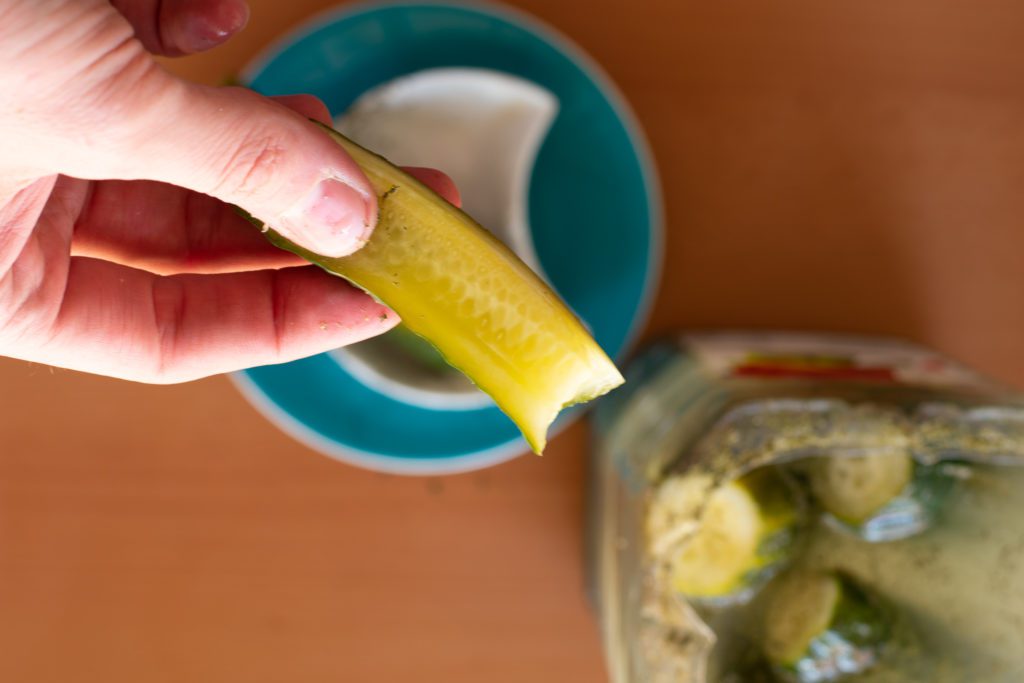Making pickles is as easy as taking them from the shop’s shelf. It only needs a jar, water, salt and some spices to let our dill pickles recipe shine!

Pickling is an anaerobic fermentation at room temperature caused by naturally occurring lactic acid bacteria on decomposing organic materials. This rather complicated sounding thing means nothing more that it happens on food when there is no air available which is the case when we pour brine or vinegar over them.
A homemade pickle doesn’t need much stuff. A bit or a bit more of salt about 2 – 4 tablespoon per 4 cups (20 – 40g per liter) and some spices or herbs like garlic, dill among the most common ones with onion, basil, black pepper, mustard or cloves following closely.
As the fermentation occurs naturally from the bacteria which is already present in the air, like it does with sour dough, we don’t need to close the top of our container tight but the cucumbers need to be kept under the water to prevent them from spoiling.
In case the water level drops so much during the fermentation that the cucumbers are exposed to the air, we have to refill our container with a bit of plain water.

Ingredients
Brine
For more detailed explanation have a look at how to make Brine.
- 1 tablespoon / 15g Salt (1.5% Brine) (minimum amount, not too salty)
- 4 cups / 1l Water
Pickle
- 2lb / 1kg Cucumbers
- 2 cloves Garlic
- 1 teaspoon Black pepper
- 1 teaspoon Dill or a bunch of fresh one
- Optional
- Mustard seed
- Onion
- Cloves
- Bay leaf
- …
How to make Dill pickles
- Brine should be made by heating up the water and dissolving the salt then cooling everything down but in our case this won’t be necessary. Just keep track of the amount of water is used filling up the jar and add the amount of salt required for pickling. Mind that, too much salt will create an overly salty pickle and a too small amount of salt won’t preserve the texture of the cucumbers letting them turning soft and soggy.
- Wash the cucumbers thoroughly. Don’t overdo it, in cold water with a bit of scrubbing will be plenty.

- If the cucumbers are big, we can chop off the tops and bottoms then pierce them through and cut them alongside essentially creating 4 slices of the one big one. It’s not necessary to cut them through to the top and bottom.

- Fill our container with the cucumbers as tightly as possible.

- Add garlic, black pepper, dill and the optional herbs and spices. Salt can be added now as well if we know about the rough amount of water needed for filling up the jar.

- Fill the container up with water and add the necessary amount of salt that shouldn’t be less than 1 tablespoon per 4 cup (1l) of water.

- Place something on top of the container that will keep the cucumbers down. This can be a small plate, clean stone, piece of wood or more organic materials like sliced potato, vine leaves or slices of bread among others.

- Cover the whole thing with a plate or in case we use a pickling earthenware jar put the lid on and let it sit on room temperature for at least 2 days.

- After two days check for firmness and flavor. If it is soggy and soft consider it a failed attempt and use more salt next time.

Enjoy!
Notes: Placing slices of bread on top of the cucumbers instead of stones will provide an additional flavor to the pickles. It’s worth the try!

A bit of salt in some water has magical properties. Check out what can be done with it:


Star this recipe!
Dill Pickles Recipe
Ingredients
Brine:
- 1 tablespoon Salt
- 4 cup / 1l Water
Solid ingredients:
- 2 lb / 1kg Cucumbers
- 2 cloves Garlic
- 1 teaspoon Black pepper
- 1 teaspoon Dill or a bunch of fresh one
- Optional
- Mustard seed
- Onion
- Cloves
- Bay leaf
- …
Instructions
- Brine should be made by heating up the water and dissolving the salt then cooling everything down but in our case this won’t be necessary. Just keep track of the amount of water is used filling up the jar and add the amount of salt required for pickling. Mind that, too much salt will create an overly salty pickle and a too small amount of salt won’t preserve the texture of the cucumbers letting them turning soft and soggy.
- Wash the cucumbers thoroughly. Don’t overdo it, in cold water with a bit of scrubbing will be plenty.
- If the cucumbers are big, we can chop off the tops and bottoms then pierce them through and cut them alongside essentially creating 4 slices of the one big one. It’s not necessary to cut them through to the top and bottom.
- Fill our container with the cucumbers as tightly as possible.
- Add garlic, black pepper, dill and the optional herbs and spices. Salt can be added now as well if we know about the rough amount of water needed for filling up the jar.
- Fill the container up with water and add the necessary amount of salt that shouldn’t be less than 1 tablespoon per 4 cup (1of water.
- Place something on top of the container that will keep the cucumbers down. This can be a small plate, clean stone, piece of wood or more organic materials like sliced potato, vine leaves or slices of bread among others.
- Cover the whole thing with a plate or in case we use a pickling earthenware jar put the lid on and let it sit on room temperature for at least 2 days.
- After two days check for firmness and flavor. If it is soggy and soft consider it a failed attempt and use more salt next time.
Notes
Pin now, Enjoy later!









